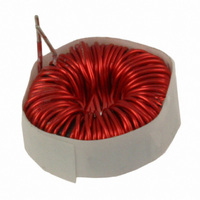Power Factor Correction (PFC) Application Notes
Background
Every year, millions and millions of notebook computers, LCD
monitors and LCD televisions are produced. With such a fast growing
number of these and other electronic devices using more and more
power, actions must to be taken to ensure the functionality of the
nationwide power grid.
In 2001, the European Union put EN61000-3-2 into effect to set the
harmonic regulation standard on any power grid supplied application
with power consumption over 75 watts. This essentially requires
power factor correction (PFC). Additionally, a standby power
dissipation limit is set to conserve power when a load is OFF.
“80 PLUS” is an initiative funded by electric utilities to integrate more
energy efficient Power Supply Units (PSUs) - especially for desktop
computers and servers. 80 PLUS certifies to more than 80% energy
efficiency at 20%, 50% and 100% of rated load. To meet the 80
PLUS certification, PSUs require a PFC of 0.9 or greater at 100%
load. This means PSUs that waste 20% or less electric energy (as
heat at the specified load levels) will lead to reduced electricity
consumption and lower bills. Rebates are sometimes given to
manufacturers who use 80 PLUS certified PSUs.
Implementing power factor correction (PFC) into switch mode power
supplies will maximize:
Input power factor (PF) is defined as:
PF is expressed as decimal number between zero and one (0 and 1).
A non-corrected power supply with a typical PF equal to 0.65 will
draw approximately 1.5 times greater input current than a PFC
supply (PF = 0.99) for the same output loading. The non-corrected
supply requires additional AC current to be generated which is not
consumed by the load, creating I
network.
There are two types of PFCs:
Passive PFC
The simplest form of PFC is passive (Passive PFC). A passive PFC
uses a filter at the AC input to correct poor power factor. The passive
PFC circuitry uses only passive components — an inductor and
some capacitors (Figure. 1).
• The power handling capability of the power supply
• Current handling capacities of power distribution networks
1. Active
2. Passive
PF =
Real Power (watts)
Apparent Power (VA)
2
R losses in the power distribution
F F i i g g u u r r e e 1 1 : A passive PFC circuit requires only a few components to increase efficiency,
but they are large due to operating at the line power frequency.
F F i i g g u u r r e e 2 2 : : An active PFC circuit produces low THD and uses relatively small passive
components.
Although pleasantly simple and robust, a passive PFC rarely achieves
low Total Harmonic Distortion (THD). Also, because the circuit operates
at the low line power frequency of 50Hz or 60Hz, the passive
elements are normally bulky and heavy.
Active PFC
Active PFC offers better THD and is significantly smaller and lighter
than a passive PFC circuit. To reduce the size and cost of passive
filter elements, an active PFC operates at a higher switching
frequency than the 50Hz/60Hz line frequency.
A C
A C
PF C Inductor
+
-
C o ntrol
Inductor
P FC
P FC
-
+
D C Bus
B u s
D C













